Are you dreaming of transforming your living space into a lush, green oasis but feel overwhelmed by the thought of becoming a plant parent? Fear not, budding indoor gardeners! Embarking on your journey to a thriving indoor jungle doesn’t have to be intimidating. Indoor plants for beginners are the perfect way to dip your toes into the world of houseplants without getting overwhelmed. These low-maintenance, forgiving plants will not only add a touch of natural beauty to your home but also purify the air and boost your mood.
In this beginner’s guide to indoor plants, we’ll introduce you to some of the best and easiest houseplants to care for, even if you don’t have a green thumb. We’ll also share essential tips and tricks to ensure your new green companions stay healthy and vibrant. So let’s dive into the wonderful world of indoor gardening and discover how simple and rewarding it can be to nurture your very own indoor oasis!
Related: Most Common Houseplants to Grow
Pothos (Epipremnum aureum)

Pothos is one of the best houseplants for beginners, with its beautiful trailing vines and heart-shaped leaves.
This low maintenance plant can thrive in various lighting conditions, from low light to bright, indirect light.
Pothos is an excellent choice for plant parents new to indoor gardening, as it is forgiving and can adapt to different environments. Fun fact: Pothos is known to purify the air by removing harmful toxins like benzene, formaldehyde, and xylene.
Snake Plant (Sansevieria)
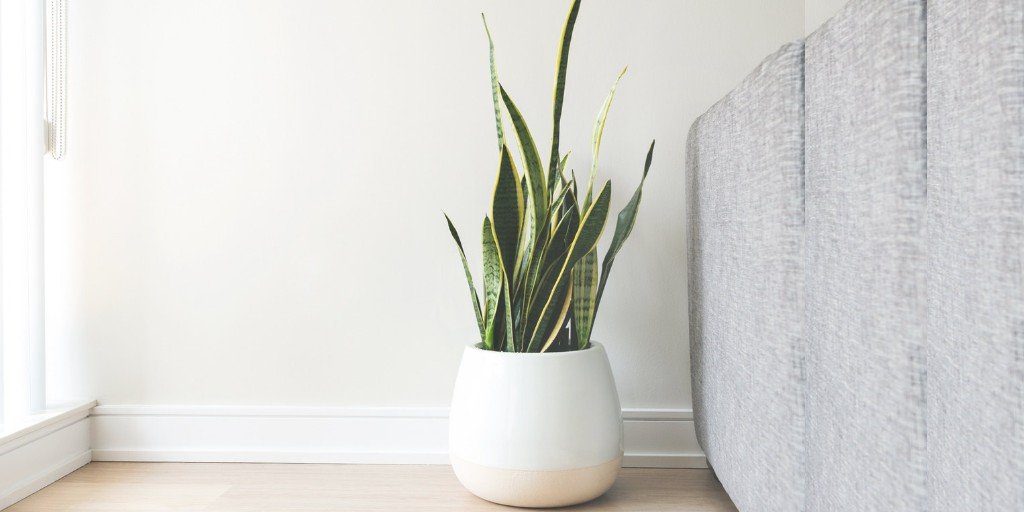
Snake plants are popular indoor plants among beginner plants enthusiasts due to their striking, upright leaves and resilience.
They can tolerate low light and even direct sun, making them versatile additions to any home.
Snake plants are low maintenance and can go for weeks without water, which is perfect for busy or forgetful plant parents. Additionally, they help purify the air by removing toxins like benzene and formaldehyde.
Spider Plant (Chlorophytum comosum)
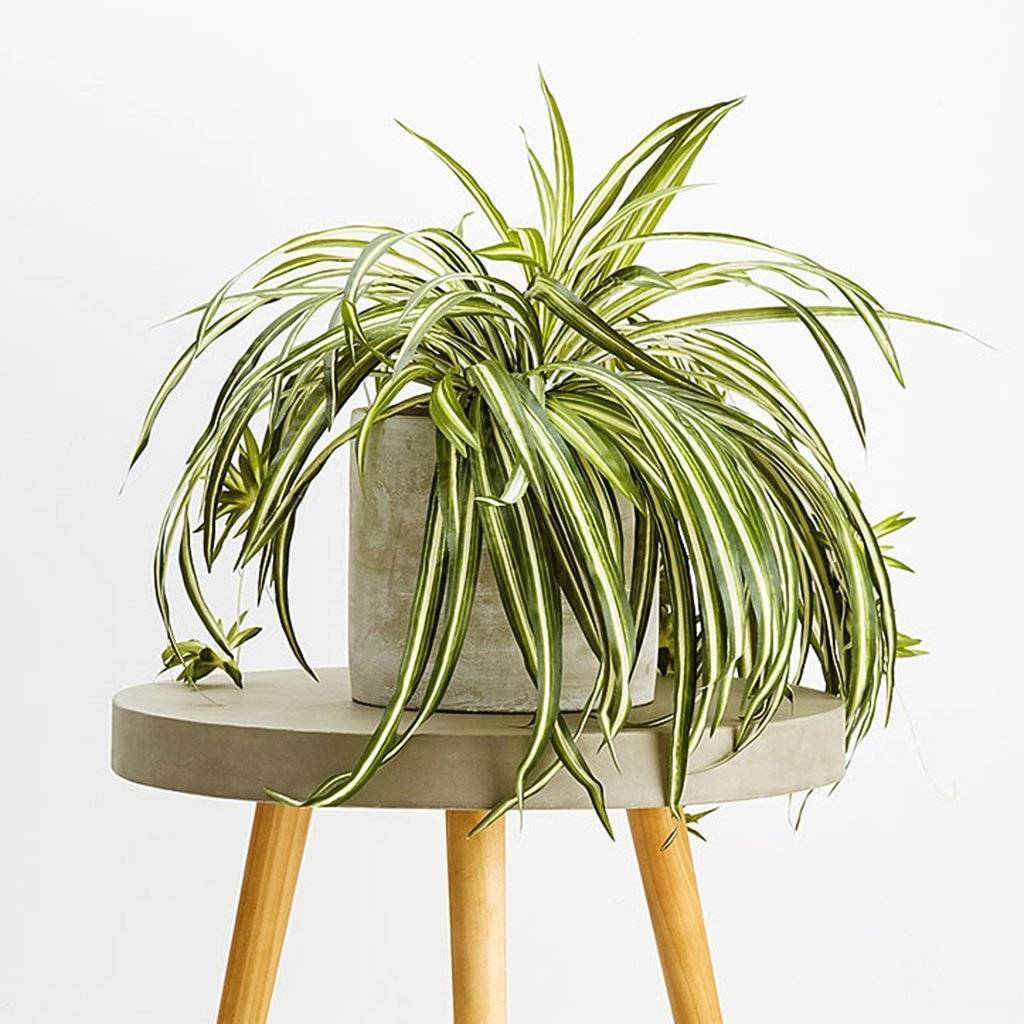
Spider plants are easy plants for beginners, with their arching foliage and baby plantlets that dangle from the mother plant, resembling spiders.
They prefer bright, indirect light but can also tolerate low light conditions. Spider plants are low maintenance, making them one of the best starter plants for new plant parents.
They are also known for their air-purifying abilities, removing pollutants like formaldehyde, xylene, and toluene from the air.
ZZ Plant (Zamioculcas zamiifolia)

ZZ plants are among the best indoor plants for beginners, thanks to their shiny, deep green leaves and ability to thrive in various lighting conditions, including low light.
These hardy plants are low maintenance, requiring only occasional watering, and are perfect for those with busy schedules or who are new to plant care. Fun fact: The ZZ plant’s rhizomes store water, allowing it to survive periods of drought.
Peace Lily (Spathiphyllum)

Peace lilies are elegant and low maintenance, making them ideal houseplants for beginners.
They prefer bright, indirect light but can tolerate low light conditions. Peace lilies are known for their beautiful white flowers, which can last for weeks, and their air-purifying abilities, removing toxins like benzene, formaldehyde, and trichloroethylene.
Keep in mind that these plants are toxic to pets, so place them out of reach of your furry friends.
Philodendron (Philodendron spp.)
Philodendrons are a diverse group of plants, with many species being beginner-friendly. These plants often have heart-shaped leaves and can be vining or bushy, depending on the species.
Philodendrons prefer bright, indirect light but can tolerate lower light conditions. They are low maintenance, forgiving, and great for first-time plant parents.
Fun fact: The name “Philodendron” comes from the Greek words for “love” (philo) and “tree” (dendron), making them the perfect addition for plant lovers.
Dracaena (Dracaena spp.)

Dracaena plants are easy plants for beginners, featuring long, narrow leaves with various colors and patterns. They can adapt to different lighting conditions, from low light to bright, indirect light.
Dracaena plants are low maintenance, requiring only moderate watering, and are perfect for new plant parents looking to add some height to their indoor garden.
Rubber Plant (Ficus elastica)

Rubber plants are known for their large, glossy leaves and easy care, making them an excellent choice for beginner plant parents. They prefer bright, indirect light but can tolerate lower light levels as well.
Rubber plants are relatively low maintenance, requiring only moderate watering and occasional pruning to maintain their shape. Fun fact: The name “Rubber Plant” comes from the milky latex sap it produces, which was once used to make rubber.
Jade Plant (Crassula ovata)
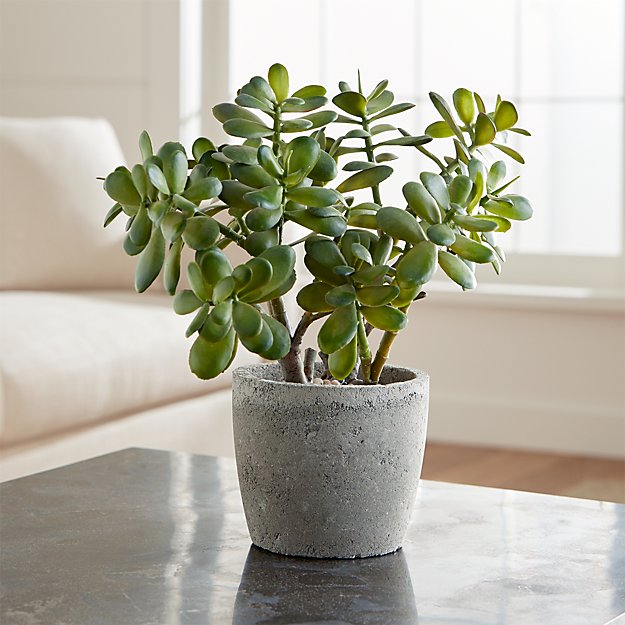
Jade plants are popular succulents, perfect for beginners due to their easy care and attractive, rounded leaves. They prefer bright light, including some direct sun, and well-draining soil.
Jade plants are low maintenance, requiring infrequent watering and minimal attention. As they age, these plants can develop a thick, woody trunk, resembling a miniature tree.
Aloe Vera (Aloe barbadensis)
Aloe Vera is a popular and easy-to-grow succulent, known for its medicinal properties. It’s an excellent choice for beginners, as it requires minimal care and thrives in bright, indirect light or direct sun.
Aloe Vera plants need well-draining soil and infrequent watering, making them low maintenance and perfect for busy plant parents. Fun fact: Aloe Vera gel can be used to soothe skin irritations and burns.
Cast Iron Plant (Aspidistra elatior)

Cast Iron Plants are aptly named for their toughness and ability to withstand neglect, making them ideal houseplants for beginners. They can tolerate low light conditions and require only moderate watering, ensuring low maintenance care.
Cast Iron Plants are perfect for new plant parents who want an attractive, resilient plant to add greenery to their indoor space.
Monstera Deliciosa (Swiss Cheese Plant)
Monstera Deliciosa, also known as the Swiss Cheese Plant, is a beginner-friendly tropical plant known for its large, split leaves. This plant thrives in bright, indirect light and requires moderate watering, allowing the soil to dry slightly between waterings.
Monsteras are perfect for plant parents who want a statement piece in their home, as these plants can grow quite large over time.
Dieffenbachia (Dumb Cane)
Dieffenbachia, or Dumb Cane, is an easy plant for beginners, featuring large, variegated leaves in shades of green and white.
They can adapt to various lighting conditions, from low light to bright, indirect light. Dieffenbachia plants prefer well-draining soil and require moderate watering, allowing the soil to dry slightly between waterings. Note that these plants are toxic if ingested, so keep them away from pets and children.
English Ivy (Hedera helix)
English Ivy is a versatile and easy-to-grow plant, perfect for beginners looking for an attractive trailing or climbing plant. It can adapt to various lighting conditions, from low light to bright, indirect light.
English Ivy prefers well-draining soil and requires moderate watering, allowing the soil to dry slightly between waterings. It’s also known for its air-purifying abilities, making it an excellent addition to any home or office.
Heartleaf Philodendron (Philodendron hederaceum)
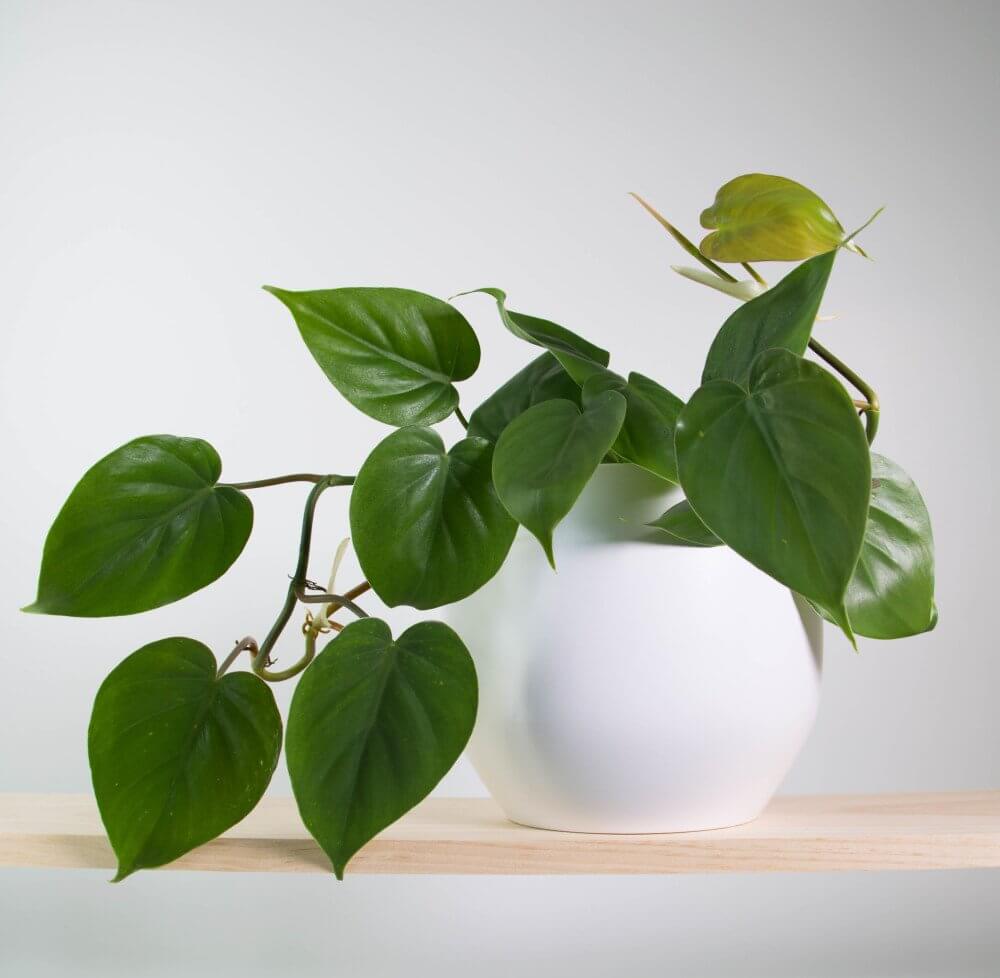
Heartleaf Philodendron is a beginner-friendly trailing plant, featuring heart-shaped leaves and a forgiving nature. It can thrive in a variety of lighting conditions, from low light to bright, indirect light.
Heartleaf Philodendrons are low maintenance and easy to care for, making them perfect for new plant parents looking to add a touch of greenery to their space.
Fiddle Leaf Fig (Ficus lyrata)
Fiddle Leaf Figs are popular houseplants known for their large, violin-shaped leaves, making them a statement piece in any home. They prefer bright, indirect light and well-draining soil.
While they can be a bit more finicky than some other beginner plants, Fiddle Leaf Figs are still manageable with proper care, making them an excellent option for plant parents looking to step up their indoor gardening game.
Golden Barrel Cactus (Echinocactus grusonii)

The Golden Barrel Cactus is an eye-catching, low-maintenance succulent that’s perfect for beginners. Its round, golden-yellow spines create a striking appearance, and it thrives in bright light or direct sun.
Golden Barrel Cacti require well-draining soil and infrequent watering, making them an easy addition to any indoor garden.
Boston Fern (Nephrolepis exaltata)
Boston Ferns are classic houseplants with feathery, green fronds that create a lush, tropical vibe. They prefer bright, indirect light and consistent moisture, making them slightly more demanding than some other beginner plants.
However, with proper care, Boston Ferns can be a beautiful and rewarding addition to your indoor garden.
Parlor Palm (Chamaedorea elegans)
Parlor Palms are elegant, low-maintenance plants perfect for adding a touch of greenery to any indoor space.
They thrive in bright, indirect light but can tolerate low light conditions as well.
Parlor Palms are slow-growing and require only moderate watering, making them an excellent choice for beginner plant parents looking for a low-maintenance palm.
Chinese Evergreen (Aglaonema)
Chinese Evergreens are versatile and beginner-friendly houseplants known for their striking, variegated foliage.
They can adapt to a variety of lighting conditions, from low light to bright, indirect light.
Chinese Evergreens are low maintenance, requiring only moderate watering and occasional pruning to maintain their shape.
Prayer Plant (Maranta leuconeura)
Prayer Plants are unique houseplants with patterned leaves that fold up at night, resembling hands in prayer.
They prefer bright, indirect light and consistent moisture, making them slightly more demanding than some other beginner plants.
However, with proper care, Prayer Plants can be a beautiful and rewarding addition to your indoor garden.
Umbrella Tree (Schefflera arboricola)
Umbrella Trees are popular houseplants known for their glossy, umbrella-like leaves. They prefer bright, indirect light and well-draining soil.
Umbrella Trees are low maintenance, requiring only moderate watering and occasional pruning to maintain their shape.
With their attractive foliage and easy care, Umbrella Trees are an excellent choice for beginners looking to add some greenery to their indoor space.
Kentia Palm (Howea forsteriana)
Kentia Palms are elegant, low-maintenance plants perfect for adding a touch of tropical greenery to any indoor space. They thrive in bright, indirect light but can tolerate low light conditions as well.
Kentia Palms are slow-growing and require only moderate watering, making them an excellent choice for beginner plant parents looking for a low-maintenance palm.
Yucca (Yucca elephantipes)
Yucca plants are architectural and easy-to-grow houseplants, known for their sword-like leaves and sturdy trunks. They prefer bright light, including some direct sun, and well-draining soil.
Yucca plants are low maintenance, requiring infrequent watering and minimal attention, making them perfect for busy plant parents or beginners looking for a striking addition to their indoor garden.
Arrowhead Plant (Syngonium podophyllum)
Arrowhead Plants are beginner-friendly houseplants with attractive, arrow-shaped leaves that come in various colors and patterns. They can adapt to a variety of lighting conditions, from low light to bright, indirect light.
Arrowhead Plants are low maintenance, requiring only moderate watering and occasional pruning to maintain their shape. They’re perfect for new plant parents looking to add a touch of colorful foliage to their indoor space.
Hoya (Hoya spp.)
Hoyas, also known as Wax Plants, are easy-to-grow, trailing houseplants with thick, waxy leaves and stunning, fragrant flowers. They prefer bright, indirect light and well-draining soil.
Hoyas are low maintenance, requiring infrequent watering and minimal attention, making them perfect for beginners looking for a unique and attractive addition to their indoor garden.
Weeping Fig (Ficus benjamina)
Weeping Figs are popular houseplants known for their graceful, weeping branches and glossy, green leaves. They prefer bright, indirect light and well-draining soil.
Weeping Figs are relatively low maintenance, requiring only moderate watering and occasional pruning to maintain their shape. With their attractive foliage and easy care, Weeping Figs are an excellent choice for beginners looking to add some greenery to their indoor space.
Zebra Plant (Haworthia fasciata)
Zebra Plants are small, attractive succulents with dark green leaves and striking, white horizontal stripes. They prefer bright, indirect light and well-draining soil.
Zebra Plants are low maintenance, requiring infrequent watering and minimal attention, making them perfect for beginners looking for an easy-to-grow, eye-catching addition to their indoor garden.
Areca Palm (Dypsis lutescens)
Areca Palms are elegant, low-maintenance plants perfect for adding a touch of tropical greenery to any indoor space. They thrive in bright, indirect light but can tolerate lower light levels as well. Areca Palms are slow-growing and require only moderate watering, making them an excellent choice for beginner plant parents looking for a low-maintenance palm.
Calathea (Calathea spp.)
Calatheas are popular houseplants known for their striking, patterned leaves that come in various colors and shapes. They prefer bright, indirect light and consistent moisture, making them slightly more demanding than some other beginner plants.
However, with proper care, Calatheas can be a beautiful and rewarding addition to your indoor garden.
Ponytail Palm (Beaucarnea recurvata)
Ponytail Palms are unique, low-maintenance houseplants with a bulbous base and long, cascading leaves that resemble a ponytail. They prefer bright light, including some direct sun, and well-draining soil.
Ponytail Palms are drought-tolerant, requiring infrequent watering, making them an excellent choice for beginners looking for an easy-to-grow, eye-catching addition to their indoor garden.
Candelabra Cactus (Euphorbia lactea)
The Candelabra Cactus is a striking, low-maintenance succulent with a unique, branching growth habit that resembles a candelabra. It thrives in bright light or direct sun and requires well-draining soil and infrequent watering.
Candelabra Cacti are perfect for beginners looking for an architectural and easy-to-care-for addition to their indoor garden.
Money Tree (Pachira aquatica)
Money Trees are popular houseplants believed to bring good luck and prosperity.
They have a unique, braided trunk and glossy, green leaves. Money Trees prefer bright, indirect light and well-draining soil.
They are relatively low maintenance, requiring only moderate watering and occasional pruning to maintain their shape.
Money Trees are an excellent choice for beginners looking to add some greenery and good fortune to their indoor space.
Bird’s Nest Fern (Asplenium nidus)
Bird’s Nest Ferns are attractive houseplants with wavy, bright green fronds that create a lush, tropical vibe.
They prefer bright, indirect light and consistently moist soil, making them slightly more demanding than some other beginner plants.
However, with proper care, Bird’s Nest Ferns can be a beautiful and rewarding addition to your indoor garden.
Fittonia (Fittonia spp.)
Fittonias, also known as Nerve Plants, are small, colorful houseplants with striking, vein-like patterns on their leaves.
They prefer bright, indirect light and consistently moist soil, making them slightly more demanding than some other beginner plants.
However, with proper care, Fittonias can be a beautiful and eye-catching addition to your indoor garden.
Peperomia
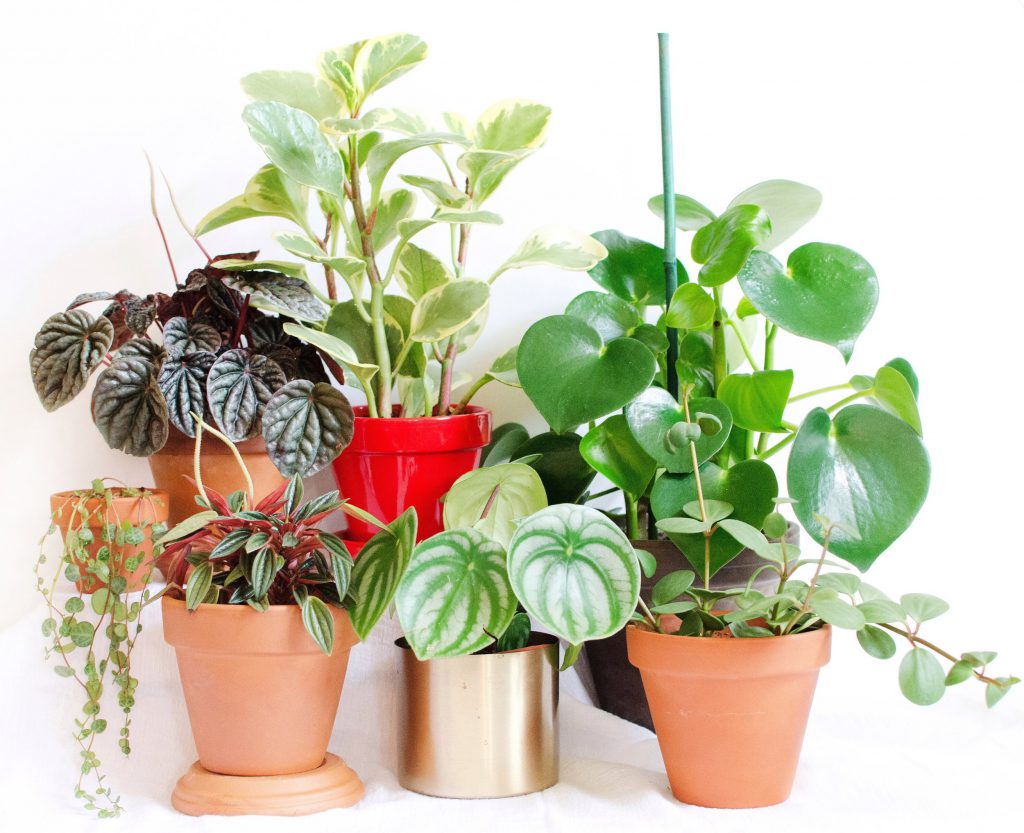
Pepromia plants are popular choices for new plant parents because they are low-maintenance and adaptable to various growing conditions. Peperomia plants come in a wide variety of leaf shapes, sizes, and colors, adding visual interest to your indoor garden.
Peperomias prefer bright, indirect light, but they can also tolerate lower light conditions. Overwatering is the most common issue with Peperomia plants, so it’s essential to let the soil dry out between waterings.
They prefer well-draining soil and do well in a pot with drainage holes to prevent root rot. With their compact size and resilient nature, Peperomia plants make excellent houseplants for beginners.
Lucky Bamboo (Dracaena sanderiana)

Lucky Bamboo is an easy indoor plant, making it an excellent choice for beginners. It is known for its low-maintenance nature and ability to thrive in a range of conditions. Lucky Bamboo is often associated with good fortune and positive energy, making it a popular choice for both home and office settings.
One of the reasons Lucky Bamboo is so easy to care for is its ability to grow in both soil and water. When growing in water, simply place the stems in a container filled with water, and replace the water every few weeks to keep it fresh. If growing in soil, use a well-draining potting mix and water it when the top inch of soil feels dry.
Lucky Bamboo prefers bright, indirect light but can tolerate lower light conditions as well. Avoid placing it in direct sunlight, as this can scorch the leaves. With minimal care, Lucky Bamboo can make an attractive, low-maintenance addition to your indoor garden.
FAQ
What are the best indoor plants for beginners?
Some popular indoor plants for beginners include Pothos, Snake Plant, Spider Plant, ZZ Plant, and Peace Lily. These plants are low maintenance and adaptable to various lighting conditions, making them perfect for new plant parents.
How often should I water my indoor plants?
Watering frequency depends on the type of plant and its specific needs. In general, it’s best to water most indoor plants when the top inch of soil feels dry. Succulents and cacti require less frequent watering, while tropical plants might need more consistent moisture. Always research your specific plant’s watering needs to avoid over- or under-watering.
How much light do indoor plants need?
Different indoor plants have different light requirements. Some plants, like Snake Plants and ZZ Plants, can tolerate low light, while others, like Fiddle Leaf Figs and Aloe Vera, prefer bright, indirect light. Always research your specific plant’s light needs and place it in a location that meets those requirements.
How can I prevent common indoor plant problems, like pests and diseases?
To keep your indoor plants healthy and pest-free, ensure that they receive proper care. This includes providing appropriate lighting, watering, and humidity levels. Additionally, regularly inspect your plants for signs of pests or disease, and address any issues promptly. Keep the plants clean by wiping the leaves and removing any dead or damaged foliage.
How do I choose the right pot and soil for my indoor plants?
Choose a pot with drainage holes to prevent overwatering and root rot. The pot’s size should accommodate the plant’s root system, with some room for growth. For soil, use a well-draining potting mix that is appropriate for your specific plant type. Some plants, like cacti and succulents, require a specialized potting mix, while others can thrive in a general-purpose indoor potting mix.
